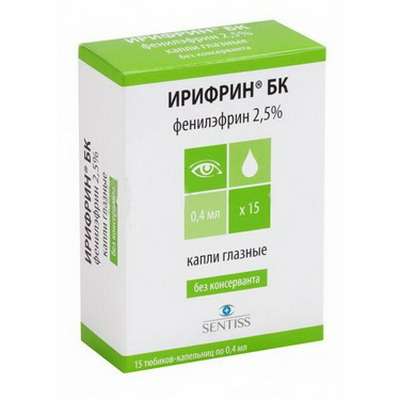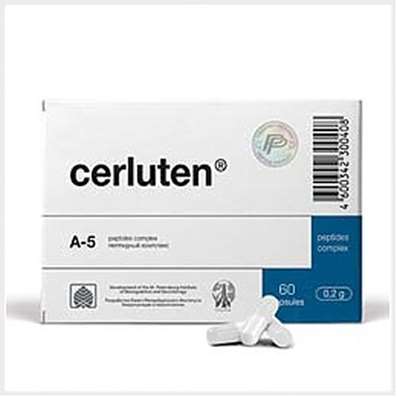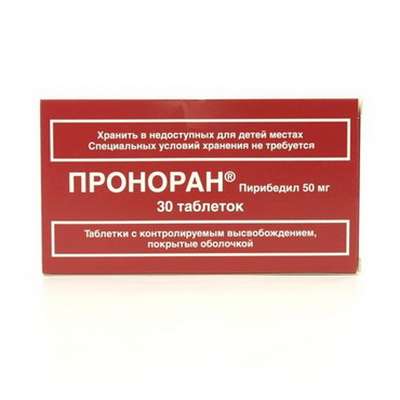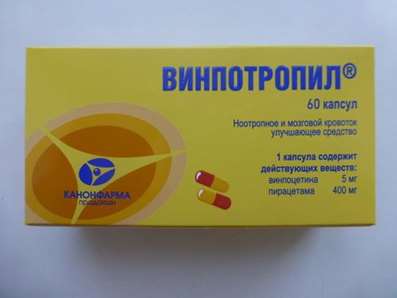Instruction for use: Engerix B
I want this, give me price
Dosage form: Suspension for intramuscular administration; Suspension for injections
Active substance: Vaccinum ad prophylaxim hepatitis epidemicae B
ATX
J07BC01 Hepatitis B virus inactivated whole
Pharmacological group:
Vaccines, serums, phages and toxoids
The nosological classification (ICD-10)
Z29.1 Prophylactic immunotherapy: Vaccination against viral infections; donor Vaccination; Vaccination and revaccination; Vaccination of newborns; Vaccination against hepatitis B; Immunization; Correction of the immune status; Therapeutic and prophylactic immunization; Preventive immunization; Specific immunoprophylaxis; Stimulation of the processes of nonspecific immunit
Composition and release form
Suspension for injection for children and adolescents under 19 years 1 dose
Hepatitis B vaccine (S-protein containing the main surface antigen of hepatitis B virus) 10 μg
Auxiliary substances (single-dose package): aluminum hydroxide; sodium chloride; Disodium phosphate dihydrate; Sodium dihydrogen phosphate dihydrate; water for injections. Does not contain a preservative. The residual content of the merthiolate is not more than 2 μg / ml
Auxiliary substances (multi-dose packaging): aluminum hydroxide; sodium chloride; Disodium phosphate dihydrate; Sodium dihydrogenphosphate dihydrate; 2-phenoxyethanol; water for injections. Preservative content of 2-phenoxyethanol: 5.0 mg in 1 ml. The residual content of the merthiolate is not more than 2 μg / ml
In vials of 1 dose (0.5 ml); In a box of 1, 25 or 100 bottles or in bottles of 10 doses (5 ml); In a box of 50 vials or in a disposable syringe for 1 dose (0.5 ml); In a box of 1 or 5 syringes.
Suspension for injection for adults 1 dose
Hepatitis B vaccine (S-protein containing the main surface antigen of the hepatitis B virus) 20 μg
Auxiliary substances (single-dose package): aluminum hydroxide; sodium chloride; Disodium phosphate dihydrate; Sodium dihydrogen phosphate dihydrate; water for injections. Does not contain a preservative. The residual content of the merthiolate is not more than 2 μg / ml
Auxiliary substances (multi-dose packaging): aluminum hydroxide; sodium chloride; Disodium phosphate dihydrate; Sodium dihydrogen phosphate dihydrate; 2-phenoxyethanol; water for injections. Preservative content of 2-phenoxyethanol: 5.0 mg in 1 ml. The residual content of the merthiolate is not more than 2 μg / ml
In vials of 1 dose (1 ml); In a box of 1, 25 or 100 bottles or in bottles of 10 doses (10 ml); In a box of 50 vials or in a disposable syringe for 1 dose (1 ml); In a box of 1 or 5 syringes.
Description of dosage form
The whitish, slightly opalescent liquid, when settled, is divided into 2 layers: the upper one is a colorless transparent liquid, the lower one is a gel-like white precipitate, which is easily broken upon shaking.
Characteristic
Contains the purified main surface antigen of the hepatitis B virus (HBsAg), obtained by recombinant DNA technology and adsorbed on aluminum hydroxide. The antigen is produced by a yeast cell culture (Saccharomyces cerevisiae) obtained by genetic engineering and having a gene encoding the main surface antigen of the hepatitis B virus (HBV). From yeast cells, HBsAg is purified by several sequential physico-chemical methods.
HBsAg is spontaneously transformed into spherical particles with a diameter of 20 nm, containing non-glycosylated HBsAg polypeptides and a lipid matrix consisting mainly of phospholipids. Studies have shown that these particles have properties that are characteristic of natural HBsAg.
The vaccine is highly purified and complies with WHO requirements for recombinant hepatitis B vaccines. No substance with a substance of the human body is used in the production of the vaccine.
Pharmachologic effect
Mode action - immunostimulating.
Provides active immunity against hepatitis B virus.
Clinical Pharmacology
Preventive efficacy:
In the risk groups: it ranges from 95 to 100% in newborns, children and adults at risk.
In newborns from HBsAg positive mothers immunized according to the scheme of 0, 1, 2, 12 months or 0, 1, 6 months without simultaneous or subsequent administration of immunoglobulin against HBV (HBIg) at birth, the preventive efficacy of vaccination is 95%, while simultaneous administration Vaccine and HBIg at birth increases the effectiveness of prevention to 98%.
In healthy subjects: when the vaccination scheme is used for 0, 1, 6 months, ≥96% of vaccinees determine the protective level of antibodies 7 months after the first dose. If the vaccination is carried out according to the scheme of 0, 1, 2, 12 months, then 15 and 89% of the vaccinated have a protective level of antibodies after 1 month after the first dose and 1 month after the third dose, respectively. After 1 month after the fourth dose, the protective antibody titer is determined in 95.8% of the vaccinated.
In exceptional conditions, when the vaccination is carried out according to the scheme 0, 7, 21 days, at 1 and 5 weeks after the third dose, in 65.2 and 76% of the vaccinated the protective antibody titer is determined, respectively. After 1 month after the 4 dose, administered one year after immunization, the protective level of antibodies is determined in 98.6% of the vaccinated.
Reducing the incidence of hepatocellular carcinoma in children: as a result of universal vaccination of children aged 6 to 14 years against hepatitis B in Taiwan, there has been a significant reduction in the incidence of hepatocellular carcinoma as well as the persistence of hepatitis B antigen, which is an important factor in the development of liver cancer.
Indication of the drug Engerix B
Active immunization of children and adults against hepatitis B, especially those at risk of contracting the hepatitis B virus.
Angering B can also prevent hepatitis D infection in the case of co-infection with a delta agent.
In regions with a low incidence of hepatitis B, the Injection B vaccination is recommended for newborn infants and adolescents, as well as those with an increased risk of infection, which include:
- children born to mothers who carry the hepatitis B virus;
- staff of medical and dental institutions, including staff of clinical and serological laboratories;
- Patients who are receiving or are planning a transfusion of blood and its components; Planned surgical interventions; Invasive medical and diagnostic procedures;
- Persons at whom the increased risk of the disease is associated with their sexual behavior;
- drug addicts;
- persons going to regions with a wide spread of hepatitis B;
- children in regions with a wide spread of hepatitis B;
- patients with chronic hepatitis C and carriers of hepatitis C virus;
- patients sickle-cell anemia;
- Patients who plan organ transplantation;
- people who abuse alcohol;
- persons who have close contact with patients or carriers of the virus, and all those who, due to work or for any other reason, may be infected with the hepatitis B virus.
In areas with a moderate or high incidence of hepatitis B, where there is a risk of infection for the whole population, in addition to all the above groups, vaccination is also required for all children, including newborns, as well as adolescents and youth.
Contraindications
Hypersensitivity to any component of the vaccine (merziolate, yeast), manifestation of a hypersensitivity reaction after previous administration of hepatitis B vaccines.
The administration of the drug should be postponed in the following cases: acute and severe diseases, as well as severe infectious diseases accompanied by fever. In the presence of an infectious disease in mild form, immunization can be carried out immediately after the normalization of body temperature.
Application of pregnancy and breastfeeding
There are no data on the use of the vaccine in pregnancy. However, although the risk of the effect of inactivated viral vaccines on the fetus is minimal, in pregnancy, B Ranking B should be prescribed only if the benefit to the mother exceeds the possible risk to the fetus.
Side effects
Engerix B is usually well tolerated. In many cases, the causal relationship of the following side effects with the introduction of the vaccine is not established.
Ordinary
Local: minor soreness, erythema and condensation at the site of vaccine administration.
Rare
Common symptoms: weakness, fever, malaise, flu-like symptoms.
Central and peripheral nervous system: dizziness, headache, paresthesia.
Gastrointestinal tract: nausea, vomiting, diarrhea, abdominal pain.
Liver and bile excretory system: changes in liver function.
Musculoskeletal system: arthralgia, myalgia.
Skin and derivatives: rash, itching, hives.
Very rare
Common symptoms: anaphylaxis, allergic reactions, including anaphylactic and resembling serum sickness. Allergic reactions can occur immediately after the introduction of the vaccine, and therefore vaccinated should be within 30 minutes under medical supervision.
Cardiovascular system: syncopal conditions, hypotension.
Central and peripheral nervous system: paralysis, neuropathy, neuritis (including Guillain-Barre syndrome, optic neuritis and multiple sclerosis), encephalitis, encephalopathy, meningitis, convulsions.
Hematologic disorders: thrombocytopenia.
Musculoskeletal system: arthritis.
Respiratory system: bronchospasm syndrome.
Skin and derivatives: angioedema, erythema multiforme.
Vessels (except vessels of the heart): vasculitis.
Lymphatic and reticulo-endothelial system: lymphadenopathy.
Interaction
Simultaneous appointment of Engerix B with hepatitis B immunoglobulin is not accompanied by a decrease in the titer of HBs antibodies, provided that they are injected at different injection points. Engerix B can be used concomitantly with vaccines against other infectious diseases (in this case, vaccines must be injected with different syringes into different parts of the body). It is combined with all vaccinations of the Russian national immunization calendar, as well as vaccines against influenza (inactivated), viral hepatitis A and tick-borne encephalitis.
Interchangeability of vaccines against hepatitis B.
Engerix B can be used to complete the main course of immunization initiated by other genetically engineered hepatitis B vaccines, as well as for revaccination in the same cases.
Dosing and Administration
IM, in the area of the deltoid muscle (adults and children of older age) or in the anterolateral area of the thigh (newborns and young children). As an exception, patients with thrombocytopenia or other diseases of the blood coagulation system may be given a vaccine. Single doses: adults (over 19 years) - 20 mcg (1 ml); Newborns, children and adolescents under the age of 19 years - 10 mkg (0.5 ml).
Immunization schedule
To obtain optimal immune protection, 3 in / m injections of the vaccine are required.
Apply 3 schemes of immunization:
The usual immunization is carried out according to the scheme 0, 1, 6 months. In this case, the vaccine is given to the newborn in the first 12 hours of life. This scheme provides for the formation of immune defense in a somewhat later time, but at the same time a higher antibody titer is achieved.
Accelerated immunization is carried out according to the scheme of 0, 1, 2 months, i.å. 3 injections with an interval of 1 month. Immune protection in this case is formed more quickly, but the antibody titre of some of the vaccinated can be at a lower level, and therefore it is necessary to carry out revaccination 12 months after the first dose. This scheme is provided by the calendar of preventive vaccinations in Russia for the vaccination of children born from mothers of hepatitis B virus or women with hepatitis B in the third trimester of pregnancy.
Rapid formation of immune defense (for example, in the case of an alleged planned surgery or a trip to a region with a wide spread of hepatitis B), immunization of adults can be carried out according to the scheme 0, 7, 21 days, i.e. 3 injections with an interval between the first and second injection of 7 days, between the second and the third - 14 days. This scheme of immunization provides the formation of a protective level of antibodies in 85% of vaccinated, and in this connection, a booster is given 12 months after the first dose.
After the above-mentioned vaccination courses, the introduction of a booster dose is not required for all vaccinated groups, except for medical workers. Revaccination of medical workers is recommended to be carried out once, every 7 years. In addition, revaccination can be recommended for clinical indications to persons with immunodeficiency states.
The choice of the immunization schedule and its possible modification are determined by the guidelines of the Ministry of Health and Social Development of the Russian Federation.
Special recommendations for the introduction of the vaccine, Engerix B
The procedure for the immunization of newborns from mothers who are carriers of hepatitis B virus or who have undergone viral hepatitis B in the III trimester of pregnancy: the first administration is recommended in the first 12 hours after birth, and then 1 and 2 months after the first dose. Simultaneous administration of immunoglobulin against hepatitis B is not necessary, but if it is administered concomitantly with the first administration of Engerix B, then the drugs must be injected at different injection points. Revaccination is carried out at the age of 1 year.
The procedure for immunization of persons exposed to a possible risk of infection with the hepatitis B virus (for example, when using a contaminated needle for injection): an accelerated vaccination schedule of 0, 1, 2 months or 0, 7, 21 days is recommended. The first dose of B may be administered concomitantly with an immunoglobulin against hepatitis B, in which case the injections are administered to different parts of the body. Revaccination is performed by administering one dose 12 months after the first dose.
The procedure for immunization of persons with severe immunodeficiency / undergoing program hemodialysis is 40 mkg (2 ml) on a certain day, 1, 2 and 6 months after the first dose (4 doses in total).
Overdose
At present, no cases of overdose have been reported.
Precaution measures
Since hepatitis B has a long incubation period, during the vaccination period, the presence of a latent infection of the hepatitis B virus is already possible in the body of the vaccinated person. The use of the vaccine in such cases cannot prevent hepatitis B.
The vaccine does not prevent infection with pathogens of hepatitis A, hepatitis C and hepatitis E, as well as pathogens that cause other diseases of the liver. However, the vaccination of Engerix B prevents infection caused by a delta-agent in the form of co-or superinfection of hepatitis B.
The immune response to vaccination is associated with various factors, which include age, sex, obesity, smoking and the way the vaccine is administered. Persons who are not sufficiently vaccinated (for example, over the age of 40, etc.) may need an additional dose of the vaccine.
It is not recommended to inject the vaccine in the IM in the gluteal region, as well as sc, or in / to, because This can lead to a low immune response. It is strictly prohibited to administer the IV vaccine.
In patients who are on hemodialysis, HIV-infected persons and those with other immunity disorders after the main course of immunization do not always achieve an adequate HBs-antibody titer, so such patients may require additional administration of the vaccine.
As with the use of other injectable vaccines, with the introduction of Engerix B, there must always be available for emergency care in anaphylactic reactions.
It is unlikely that the vaccine affects the ability to drive.
Special instructions
Immediately before use, the vial or syringe with the preparation should be shaken to a uniformly whitish suspension, free of foreign particles. If the vaccine looks different then it should be destroyed. When using a vial containing multiple doses, each dose should be removed and injected with a sterile syringe with a sterile needle. The drug from the opened bottle should be used during the working day.
As with other vaccines, the dose of B is to be taken under strictly aseptic conditions and with precautions to prevent contamination of the contents.
Storage conditions of the drug Engerix B
At a temperature of 2-8 ° C (don’t freezing).
Keep out of the reach of children.
Shelf life of the drug Engerix B
3 years.
Do not use after the expiry date printed on the package.

 Cart
Cart





